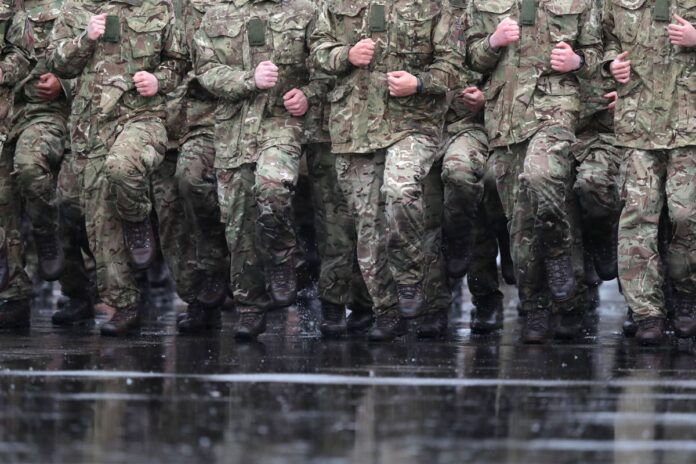Former soldiers could be called on to join a reserve force in future crises as part of an planned overhaul of the military which would cut the number of UK troops, according to a report. The Sunday Telegraph reported that the long-awaited defence command paper will reduce the British Army to its smallest size since the Napoleonic wars. Ministers are expected to defend the proposals, insisting the war in Ukraine shows how UK forces can become ‘fleeter of foot,’ according to the paper. Former regular soldiers, including those no longer serving as reservists, will reportedly be sought to help ‘revitalise’ a strategic ‘surge’ force. The Army currently has more than 75,000 personnel and there has been speculation that the paper will announce a reduction to the size, with a potential boost for research into drone technology. The Telegraph reported that the Government will announce plans to cut it to 73,000. A government source told the paper: ‘The war in Ukraine – fought on a scale not thought possible in this generation – has taught us many lessons. We have seen there for instance how our forces can become fleeter of foot.’ According to Downing Street , the command paper will lay out the measures the UK is taking to improve the ‘lethality and deployability of our own armed forces’. It will include plans to establish a new Global Response Force which defence chiefs hope will dramatically increase the ability to physically respond to crises at short notice, either by being already present or deploying more rapidly. The Prime Minister said part of the new blueprint would include ‘zig-zagging’, a concept that should allow members of the armed forces more flexibility in where they work. He said this had the potential to benefit public service and also make for more ‘fulfilling’ careers in the armed forces. It would involve making it easier for personnel to move, for example, into the civil service and back again.
Former soldiers to be ‘called to join reserves as cuts planned to Army’ – report
Sourceindependent.co.uk
RELATED ARTICLES


